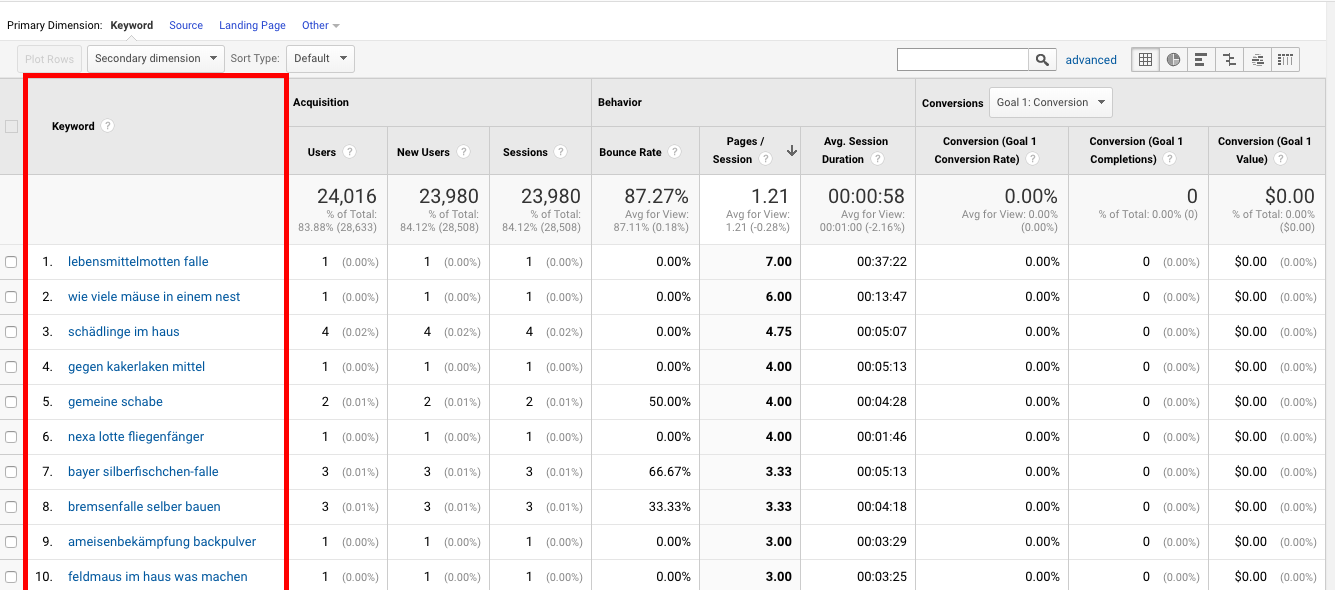What Is A Secondary Dimension In Google Analytics for Dummies
Table of ContentsThe Greatest Guide To What Is A Secondary Dimension In Google AnalyticsThe Only Guide to What Is A Secondary Dimension In Google AnalyticsThe Main Principles Of What Is A Secondary Dimension In Google Analytics What Does What Is A Secondary Dimension In Google Analytics Do?
Its measurements can be (but are not restricted to): Transaction ID Discount coupon code Most current web traffic resource, etc. That event's custom measurements could be: Login technique Customer ID, etc.Even though there are many measurements in Google Analytics, they can not cover all the feasible situations. Thus customized dimensions are required. Points like Page link are universal as well as put on numerous instances, however suppose your business offers on the internet training courses (like I do)? In Google Analytics, you will not discover any kind of dimensions associated specifically to on-line courses.
9%+ of businesses making use of GA have nothing to do with training courses. And that's why anything relevant particularly to online training courses must be set up manually. Get In Personalized Dimensions. In this post, I will certainly not dive deeper right into custom measurements in Universal Analytics. If you desire to do so, review this guide.

The range defines to which events the measurement will apply. In Universal Analytics, there were 4 ranges: User-scoped customized measurements are used to all the hits of a user (hit is an occasion, pageview, etc). If you send out Individual ID as a personalized dimension, it will certainly be applied to all the hits of that certain session AND to all the future hits sent by that individual (as long as the GA cookie remains the same).
The 15-Second Trick For What Is A Secondary Dimension In Google Analytics
You might send out the session ID personalized measurement, and also if you send it with the last event of the session, all the previous events (of the same session) will obtain the worth. This is performed in the backend of Google Analytics. dimension uses only to that specific event/hit (with which the dimension was sent)
That dimension will certainly be used just to the "test started" event. Product-scoped custom-made dimension applies just to a certain item (that is tracked with Boosted Ecommerce performance). Also if you send out several items with the very same purchase, each product might have different values in their product-scoped custom-made measurements, e. g.
Why am I informing you this? Since some things have actually transformed in Google Analytics 4. In Google Analytics 4, the session extent is no more available Continue (at least in custom dimensions). Google said they would include session-scope in the future to GA4. If you want to use a measurement to all the events of a particular session, you must send that measurement with every occasion (that can be done on the code level (gtag) or in GTM).
What Is A Secondary Dimension In Google Analytics for Dummies
It can be in a cookie, data layer, or somewhere else. From currently on, custom-made measurements are either hit-scoped or user-scoped (previously recognized as Customer Residences). User-scoped customized dimensions in GA4 work in a similar way to the user-scoped dimensions in Universal Analytics but with some differences: In Universal Analytics, a user-scoped custom measurement (set in the center of the individual session) was applied to EVERY occasion of the exact same session (also if some occasion happened prior to the measurement was set).
Despite the fact that you can send out custom-made product data to GA4, presently, there is no other way to see it in records properly. Hopefully, this will certainly be transformed in the future. Or am I missing something? (let me recognize). GA4 currently sustains item-scoped personalized dimensions. Eventually in the past, Google claimed that session-scoped customized measurements in GA4 would be offered also.
However when it involves custom measurements, this extent is still not available. And also now, allow's relocate to the second component of this article, where I will certainly reveal you just how to set up custom dimensions as well as where to discover them in Google Analytics 4 records. Allow me start with a basic introduction find out this here of the process, and also then we'll take an appearance at an instance.

If you utilize it to primarily stream data to Big, Question and after that do the analysis there, you can send any customized criteria you want, and also they will show up in Big, Question. You can simply send out the event name, state, "joined_waiting_list" and then consist of the parameter "course_name". Which's it.
Rumored Buzz on What Is A Secondary Dimension In Google Analytics
In that case, you will need to: Register a parameter as a custom meaning Beginning sending custom specifications with the occasions you desire The order DOES NOT matter here. You must do that rather a lot at the exact same time. If you begin sending out the criterion to Google Analytics 4 and just register it as a customized measurement, claim, one week later, your records will certainly be missing out on that week of information (since the enrollment of a custom measurement is not retroactive).
Every time a site visitor clicks on a food selection product, I will send out an occasion and also two added specifications (that I will certainly later on register as personalized measurements), menu_item_url, as well as menu_item_name.: Menu link click tracking trigger conditions differ on the majority of sites (as a result of various click courses, IDs, etc). Attempt to do your ideal to use this instance.
Go to Google Tag Supervisor > Triggers > New > Simply Hyperlinks. By developing this trigger, we will you can check here enable the link-tracking performance in Google Tag Supervisor.
Go to your web site as well as click any of the food selection web links. Click the first Link, Click occasion and go to the Variables tab of the preview mode.